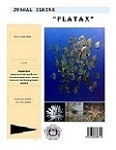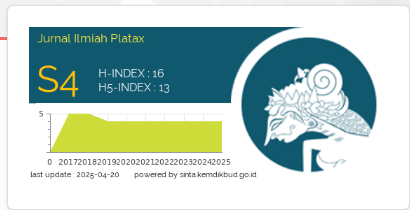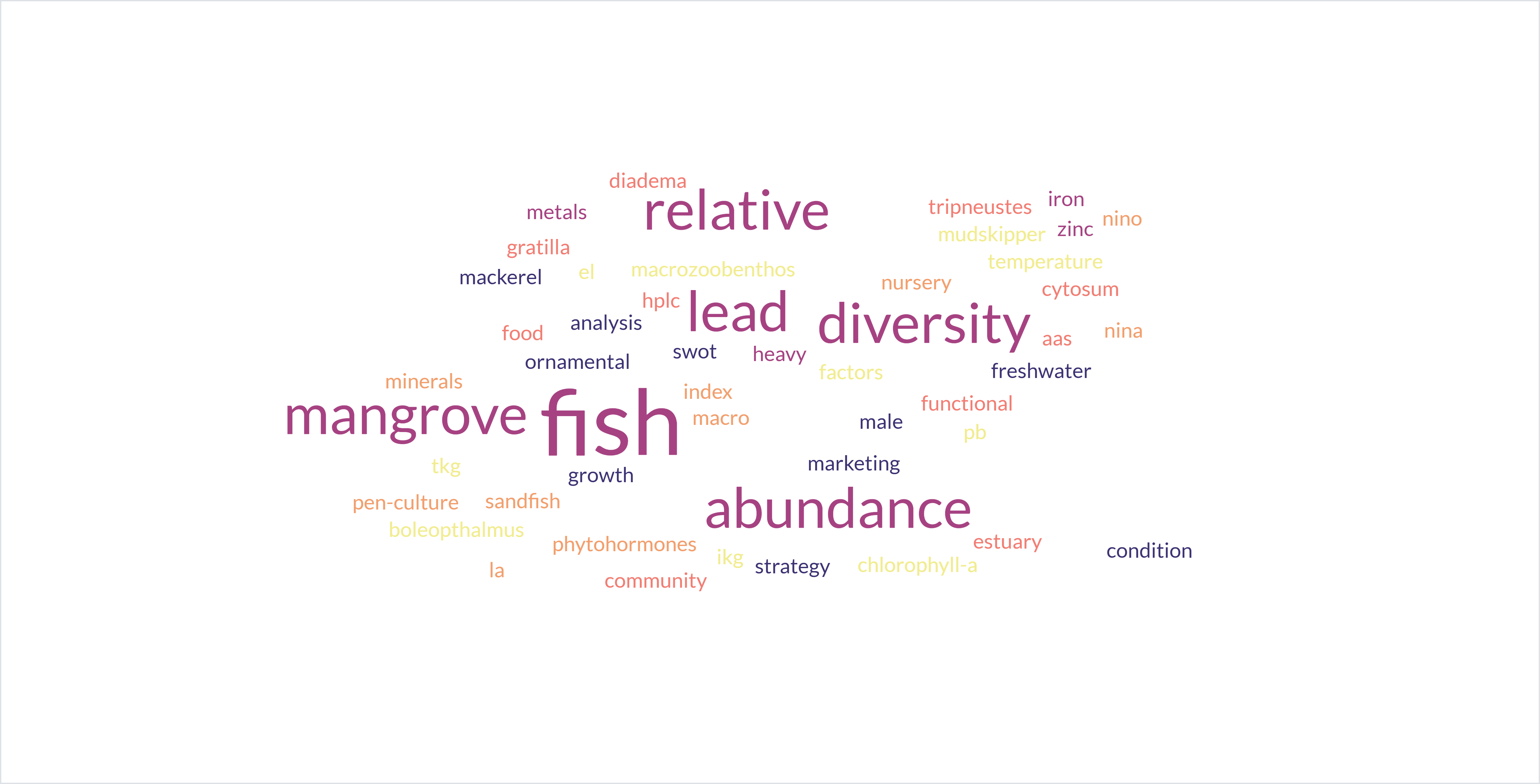Exploring Metabolites Of Green Algae Caulerpa Spp. To Discover Putative Inhibitors Of Dpp-4, A New Antidiabetic Target Protein
Molecular Docking Compounds from Marine Green Algae
DOI:
https://doi.org/10.35800/jip.v11i2.48061Keywords:
Antidiabetic;, Caulerpa racemosa;, caulerpin;, DPP-4;Abstract
Diabetes mellitus (DM) remains a serious global health threat, claiming a million lives every year and affecting nearly 9% of the adult population who suffer from this impaired insulin sensitivity disease. The Dipeptidyl peptidase-4 (DPP-4) enzyme has recently attracted attention because of its crucial role in insulin signaling, making this enzyme an interesting and emerging target for antidiabetic drug discovery. This study aimed to explore reported metabolites from marine algae of the genus Caulerpa as DPP-4 inhibitors through computational studies using CB-dock 2, Protein-Ligand Interaction Profiler, SwissAdme, and pkCMS. Molecular docking allowed the identification of 7 hit compounds with strong binding affinities (8.4 kcal to 9.3 kcal/mol) against DPP-4 target enzyme PDB ID: 3G4I. Four hits showed stronger binding affinity than two DPP-4 specific inhibitors and FDA-approved antidiabetic drugs, sitagliptin (8.4 kcal/mol) and linagliptin (9.0 kcal/mol). Following a molecular modification of the hit compounds using a bioisosterism-like approach and ADMET evaluation with pkCMS, three putative DPP-4 inhibitors were identified. They showed either stronger binding affinities or better ADMET profiles than sitagliptin and linagliptin, suggesting their promising potential as DPP-4 inhibitors. However, further optimized bioisoterism, in silico and in vivo studies, and clinical-based trials are required to confirm their antidiabetic activity.
Keywords: Antidiabetic, Caulerpa racemosa, caulerpin, DPP-4
References
Adasme, M. F., Linnemann, K. L., Bolz, S. N., Kaiser, F., Salentin, S., Haupt, V. J., & Schroeder, M. (2021). PLIP 2021: Expanding the scope of the protein–ligand interaction profiler to DNA and RNA. Nucleic acids research, 49(W1), W530-W534.
Azhaguraj, R., Milton, M. J., Ganesh, J., Ramakrishnan, M., & Antony, S. (2012). Prediction of biological activity spectra for secondary metabolites from marine macroalgae Caulerpa spp (Chlorophyta–Caulerpals).
Barchetta, I., Cimini, F. A., Dule, S., & Cavallo, M. G. (2022). Dipeptidyl Peptidase 4 (DPP4) as A Novel Adipokine: Role in Metabolism and Fat Homeostasis. Biomedicines, 10(9), 2306.
Benedetto, T. D., Bagnoli, L., Rosati, O., Marini, F., Sancineto, L., Santi, C (2022). New Halogen-Containing Drugs Approved by FDA in 2021: An Overview on Their Syntheses and Pharmaceutical Use. . MOLECULES, 27, 1632.
Benedetto Tiz, D., Bagnoli, L., Rosati, O., Marini, F., Sancineto, L., & Santi, C. (2022). New halogen-containing drugs approved by FDA in 2021: An overview on their syntheses and pharmaceutical use. Molecules, 27(5), 1643.
Bikowski, J., Pillai, R., & Shroot, B. (2006). The position not the presence of the halogen in corticosteroids influences potency and side effects. Journal of drugs in dermatology, 5(2), 125-132.
Boström, J., Hogner, A., & Schmitt, S. . (2006). Do structurally similar ligands bind similarly? Journal of Medicinal Chemistry, 49(23), 6716-6725.
Bredael, K., Geurs, S., Clarisse, D., De Bosscher, K., & D’hooghe, M. (2022). Carboxylic acid bioisosteres in medicinal chemistry: Synthesis and properties. Journal of Chemistry, 2022, 1-21.
Caron, G., Kihlberg, J., & Ermondi, G. (2019). Intramolecular hydrogen bonding: An opportunity for improved design in medicinal chemistry. Medicinal Research Reviews, 39(5), 1707-1729.
Daina, A., Michielin, O. & Zoete. (2017). SwissADME: a free web tool to evaluate pharmacokinetics, drug-likeness and medicinal chemistry friendliness of small molecules. Sci Rep, 42717. https://doi.org/https://doi.org/10.1038/srep42717
Danelius, E., Poongavanam, V., Peintner, S., Wieske, L. H., Erdélyi, M., & Kihlberg, J. (2020). Solution conformations explain the chameleonic behaviour of macrocyclic drugs. Chemistry–A European Journal, 26(23), 5231-5244.
Dissanayake, I. H., Bandaranayake, U., Keerthirathna, L. R., Manawadu, C., Silva, R. M., Mohamed, B., Ali, R., & Peiris, D. C. (2022). Integration of in vitro and in-silico analysis of Caulerpa racemosa against antioxidant, antidiabetic, and anticancer activities. Scientific Reports, 12(1), 20848.
Gilbert, M. P., & Pratley, R. E. (2020). GLP-1 analogs and DPP-4 inhibitors in type 2 diabetes therapy: review of head-to-head clinical trials. Frontiers in endocrinology, 11, 178.
Janardhan, S., & Narahari Sastry, G. (2014). Dipeptidyl peptidase IV inhibitors: a new paradigm in type 2 diabetes treatment. Current Drug Targets, 15(6), 600-621.
Jayashree, B. S., Nikhil, P. S., & Paul, S. . (2022). Bioisosterism in Drug Discovery and Development - An Overview. Medicinal chemistry (Shariqah (United Arab Emirates), 43(18), 3443-3447.
Kanwal, A., Kanwar, N., Bharati, S., Srivastava, P., Singh, S. P., & Amar, S. (2022). Exploring New Drug Targets for Type 2 Diabetes: Success, Challenges and Opportunities. Biomedicines, 10(2), 331.
Kieffer, T. J. (1995). Degradation of glucose-dependent insulinotropic polypeptide and truncated glucagons-like peptide 1 in vitro and in vivo by dipeptidyl peptidase IV. Endocrinology, 136, 3585-3596.
Laakso, M., & Lehto, S. (1998). Epidemiology of risk factors for cardiovascular disease in diabetes and impaired glucose tolerance. Atherosclerosis, 137, S65-S73.
Lindequist, U. (2016). Marine-Derived Pharmaceuticals - Challenges and Opportunities. Biomolecules & therapeutics,, 24(6), 561-571. https://doi.org/https://doi.org/10.4062/biomolther.2016.181
Liu, Y., Grimm, M., Dai, W.-t., Hou, M.-c., Xiao, Z.-X., & Cao, Y. (2020). CB-Dock: A web server for cavity detection-guided protein–ligand blind docking. Acta Pharmacologica Sinica, 41(1), 138-144.
Mandlik, R. V., Naik, S. R., Zine, S., Ved, H., & Doshi, G. (2022). Antidiabetic activity of Caulerpa racemosa: Role of proinflammatory mediators, oxidative stress, and other biomarkers. Planta Medica International Open, 9(01), e60-e71.
Mehra, R., Bhushan, S., Bast, F., & Singh, S. . (2019). Marine macroalga Caulerpa: Role of its metabolites in modulating cancer signaling. Molecular biology reports, 46(3), 3545-3555.
Meyer, E. A., Castellano, R. K., & Diederich, F. (2003). Interactions with aromatic rings in chemical and biological recognition. Angewandte Chemie International Edition, 42(11), 1210-1250.
Molchanova, N., Nielsen, J. E., Sørensen, K. B., Prabhala, B. K., Hansen, P. R., Lund, R., Barron, A. E., & Jenssen, H. (2020). Halogenation as a tool to tune antimicrobial activity of peptoids. Scientific Reports, 10(1), 14805.
Müller, K., Faeh, C., Diederich, F. (2007). Fluorine in Pharmaceuticals: Looking Beyond Intuition. Science, 317, 1881-1886.
Salehi, M., Aulinger, B., Prigeon, R. L., & D'Alessio, D. A. (2010). Effect of endogenous GLP-1 on insulin secretion in type 2 diabetes. Diabetes, 59(6), 1330-1337.
Salentin, S., Haupt, V. J., Daminelli, S., & Schroeder, M. (2014). Polypharmacology rescored: Protein–ligand interaction profiles for remote binding site similarity assessment. Progress in biophysics and molecular biology, 116(2-3), 174-186.
Sawada, T., Fedorov, D. G., & Kitaura, K. (2010). Role of the key mutation in the selective binding of avian and human influenza hemagglutinin to sialosides revealed by quantum-mechanical calculations. Journal of the American Chemical Society, 132(47), 16862-16872.
Shrivastava, S. R. S., P.S.; Ramasamy, J. (2013). Role of self-care in management of diabetes mellitus. J. Diabetes Metab. Disord, 12.
Varadwaj, P. K., & Lahiri, T. (2009). Functional group based Ligand binding affinity scoring function at atomic environmental leve. Bioinformation, 3(6), 268-274.
Williams, R., Colagiuri, S., Chan, J., Gregg, E., Ke, C., Lim, L.-L., & Yang, X. (2019). IDF Atlas 9th. In: International Diabetes Federation.
Xiao, F., Chen, Z., Wei, Z., & Tian, L. (2020). Hydrophobic interaction: a promising driving force for the biomedical applications of nucleic acids. Advanced Science, 7(16), 2001048.
Xu, Z., Yang, Z., Liu, Y., Lu, Y., Chen, K., & Zhu, W. (2014). Halogen bond: its role beyond drug–target binding affinity for drug discovery and development. Journal of chemical information and modeling, 54(1), 69-78.
Xu, Z., Yang, Z., Liu, Y., Lu, Y., Chen, K., & Zhu, W. (2015). Halogen bond: its role beyond drug-target binding affinity for drug discovery and development. Journal of chemical information and modeling. Journal of chemical information and modeling, 54, 60-71. https://doi.org/https://doi.org/10.1021/ci400539q.
Yang, H., Liu, D.-Q., Liang, T.-J., Li, J., Liu, A.-H., Yang, P., Lin, K., Yu, X.-Q., Guo, Y.-W., & Mao, S.-C. (2014). Racemosin C, a novel minor bisindole alkaloid with protein tyrosine phosphatase-1B inhibitory activity from the green alga Caulerpa racemosa. Journal of Asian natural products research, 16(12), 1158-1165.
Zhang, Q. W., Lin, L. G., & Ye, W. C. (2018). Techniques for extraction and isolation of natural products: a comprehensive review. Chinese medicine,, 13, 20. https://doi.org/https://doi.org/10.1186/s13020-018-0177-x
Downloads
Published
How to Cite
Issue
Section
License
Copyright (c) 2023 Walter Balansa

This work is licensed under a Creative Commons Attribution-NonCommercial 4.0 International License.
COPYRIGHT
Authors who publish with this journal agree to the following terms:
Authors hold their copyright and grant this journal the privilege of first publication, with the work simultaneously licensed under a Creative Commons Attribution License that permits others to impart the work with an acknowledgment of the work's origin and initial publication by this journal.
Authors can enter into separate or additional contractual arrangements for the non-exclusive distribution of the journal's published version of the work (for example, post it to an institutional repository or publish it in a book), with an acknowledgment of its underlying publication in this journal.
Authors are permitted and encouraged to post their work online (for example, in institutional repositories or on their website) as it can lead to productive exchanges, as well as earlier and greater citation of the published work (See The Effect of Open Access).






































